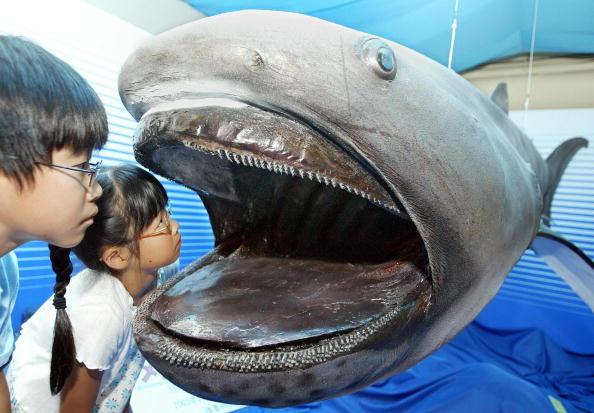The recently-captured rare megamouth shark off the coast of Japan, made history as it was the 58th time in history that one if its kind was seen by man. On Thursday scientists cut open the13-foot long, 1,500 pound female shark, where she was brought ashore by fishermen.
The Japan Daily Press reported that the fish was caught from the depths of 2,600 ft.
Onlookers gathered around the Marine Science Museum in Shizuoka City where she was cut open.
The megamouths are considered the most rarest of fish and can reach lengths of 117 feet. They have bulbous heads, short snouts, and broad mouths, which is where their name is derived from.
The species is said to be docile with filter-feeders for teeth, and large blubbery mouths. They primarily feed on krill, which is a small crustacean, but are prey to sperm whales.
Other megamouths have been caught off the shores of California, Japan, Hawaii, Taiwan, Indonesia, Brazil, Eduador, Senegal, South Africa, Mexico, and Australia, according to Florida Museum of Natural History.





